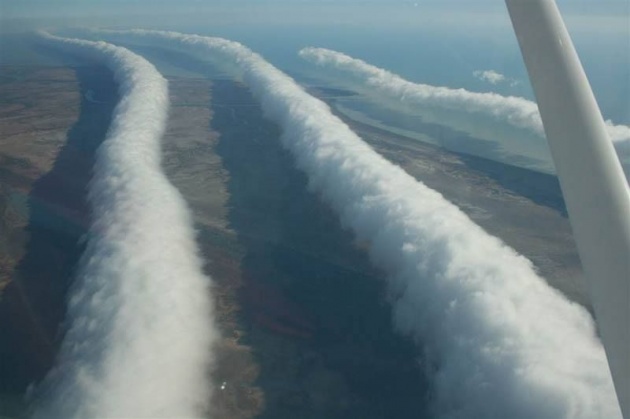The Morning Glory cloud is a rare meteorological phenomenon occasionally observed in different locations around the world. The southern part of Northern Australia’s Gulf of Carpentaria is the only known location where it can be predicted and observed on a more or less regular basis. The settlement of Burketown attracts glider pilots intent on riding this phenomenon.
Morning Glory clouds can most often be observed in Burketown in September to mid-November, when the chance to see it early in the morning is approximately 40%. A Morning Glory cloud is a roll cloud that can be up to 1,000 kilometres (620 mi) long, 1 to 2 kilometres (0.62 to 1.2 mi) high, often only 100 to 200 metres (330 to 660 ft) above the ground and can move at speeds up to 60 kilometres (37 mi) per hour. Sometimes there is only one cloud, sometimes there are up to eight consecutive roll clouds.
The Morning Glory is often accompanied by sudden wind squalls, intense low-level wind shear, a rapid increase in the vertical displacement of air parcels, and a sharp pressure jump at the surface. In the front of the cloud, there is strong vertical motion that transports air up through the cloud and creates the rolling appearance, while the air in the middle and rear of the cloud becomes turbulent and sinks. The cloud can also be described as a solitary wave or a soliton, which is a wave that has a single crest and moves without changing speed or shape.
Morning Glory Clouds
Posted on at



